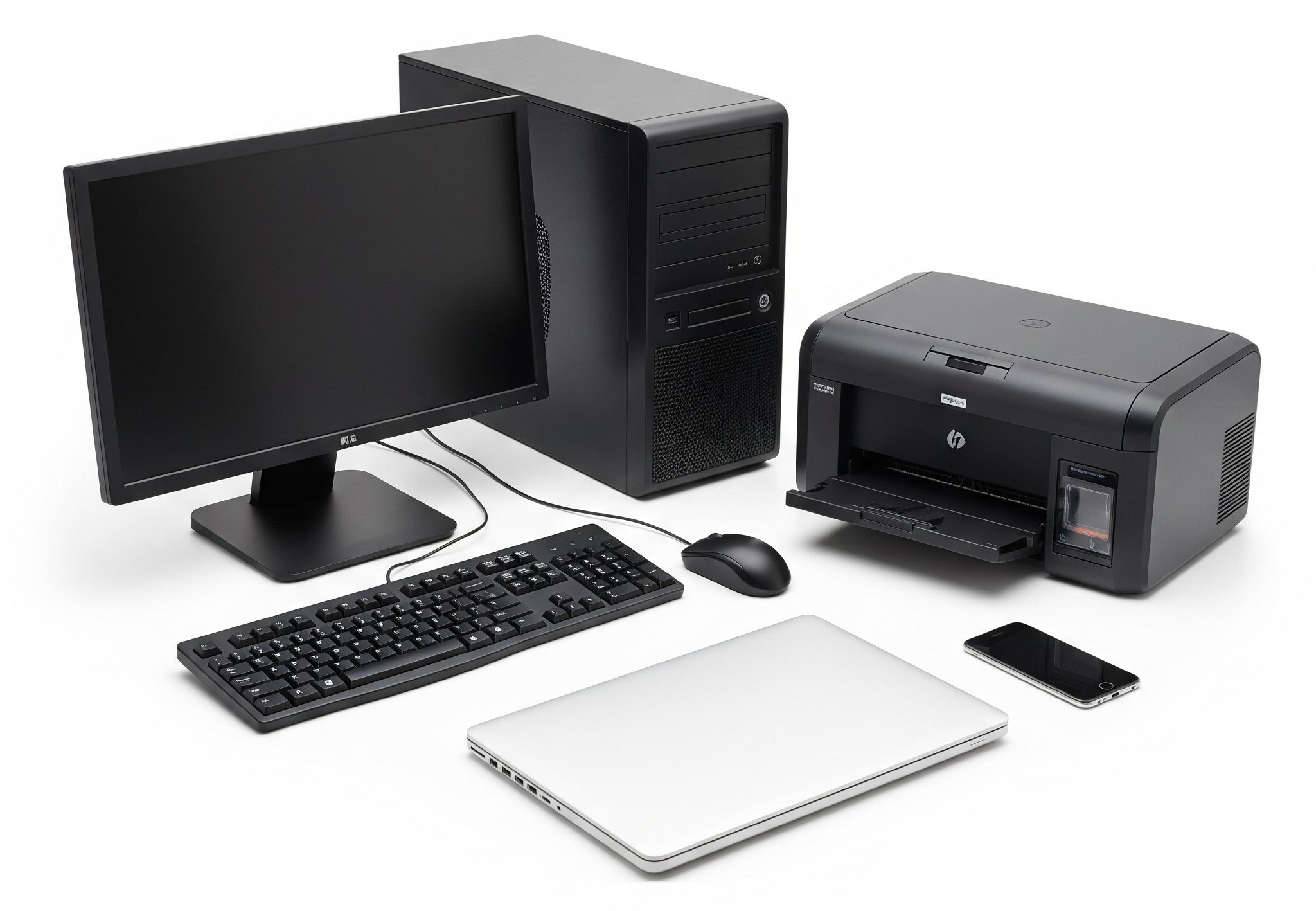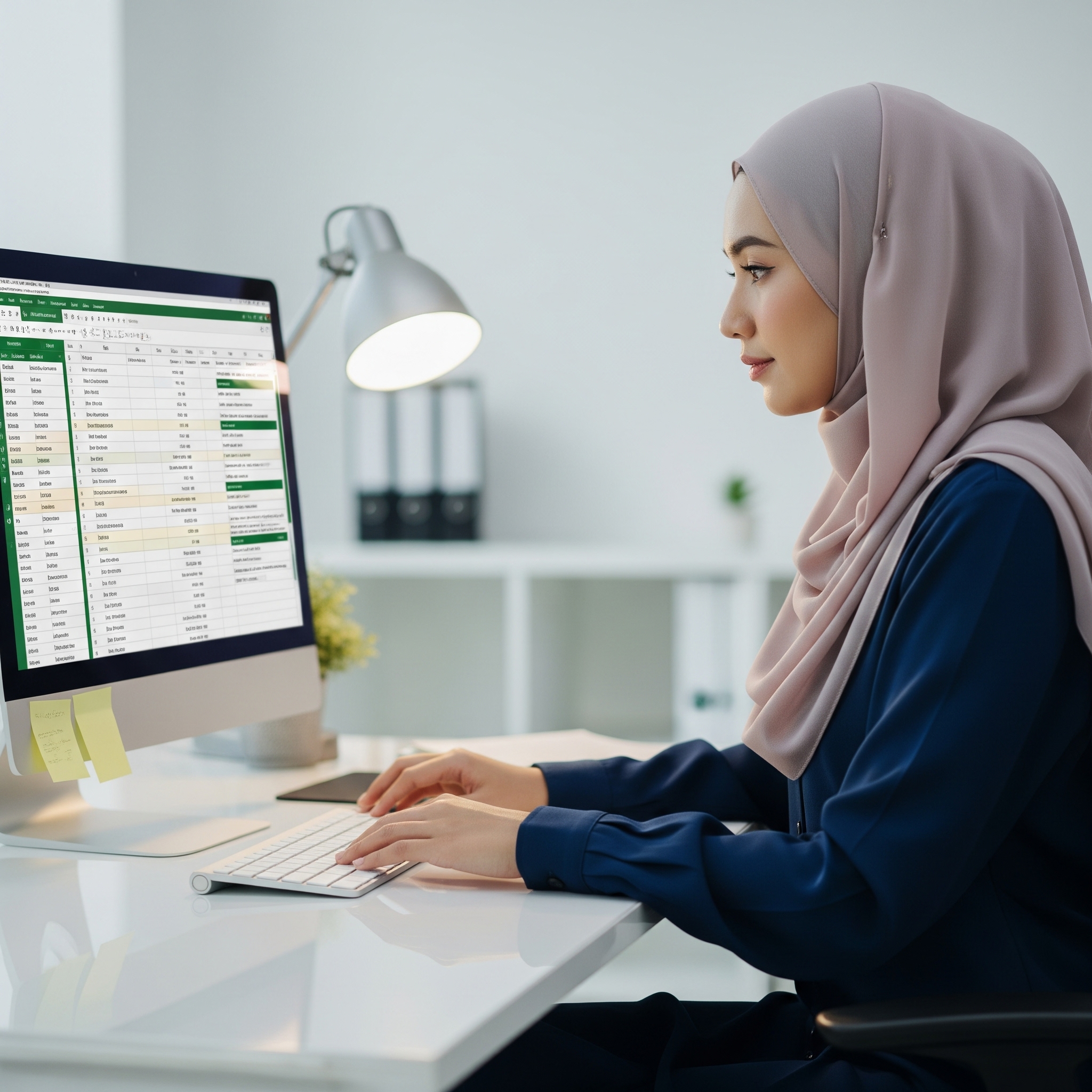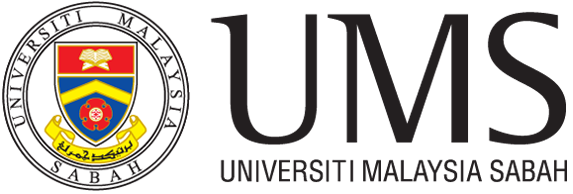Chapter 2: Core Concepts of Computing
Learning Objectives
Welcome to Chapter 2! In this chapter, we will learn the core concepts of computing. Understanding these concepts is the key to feeling more confident with technology. After studying this chapter, you will be able to:
- Define the term computer
- Explain the difference between data and information.
- Explain the four parts of the computing cycle: Input, Process, Output, and Storage.
- Tell the difference between hardware and software.
- Define common computer terms like file, folder, and network.
- Understand how computers measure data using bits and bytes.
Introduction
Every special subject has its own words. Doctors, lawyers, and chefs all have a special vocabulary for their work. The world of technology is no different. Learning these common computer words is like learning a new language. It helps us all communicate clearly and understand technology better. This chapter will explain the most important concepts and terms in a simple way, so we can all speak the same tech language.
What is a Computer?
Fundamentally, a computer can be defined as an electronic device that operates under the control of instructions to process raw items and produce a useful result. To make this formal definition clear, let’s use a modern, everyday analogy that is very familiar: ordering an item from an online store like Shopee or Lazada.
Instructions
To perform any task, a computer needs a set of specific rules to follow. In computing, these rules are called instructions. The Shopee app, for example, is a program containing thousands of instructions that tell your phone exactly what to do at every step, such as how to display products, what to do when you click “Add to Cart,” and how to calculate the final price. A computer cannot think for itself; it is entirely dependent on these instructions.
Data
The raw details you provide to the computer are called data. When you use the Shopee app, the data you provide includes the product you select, the size and color you choose, and your shipping address. By themselves, these are just separate pieces of information. In the same way, computer data can be text, numbers, or images that are not yet organized into something meaningful.
Process
The action of the computer taking the raw data and following the instructions to work on it is called the process. When you click “Place Order,” the app begins processing. It takes the data you entered, communicates with Shopee’s servers to confirm the item is in stock, calculates the total cost including shipping, and prepares your order for the seller. This is the “work” being done behind the scenes.
Information
The final, organized result that the computer shows you is the information. The raw data has been transformed through the process into something that is now meaningful and useful to you. After the app has processed your order, it presents you with information: an order confirmation number, a summary of the items you purchased, the total price, and an estimated delivery date. This is a complete, organized answer to your action.
Store
Finally, after your order is complete, the details are saved in your account’s “Order History.” This is storage. The app saves the information about your purchase so that you can look at it again later, for example, to track your package or to request a return. A computer’s ability to save information for future use is one of its most important functions.
The Basic Cycle of Computing: IPOS
Every computer, from the most powerful server to the smartphone in your pocket, performs four fundamental operations to get any task done. We call this the IPOS cycle, which stands for Input, Process, Output, and Storage.
- Input: You provide data and instructions to the computer using an input device like a keyboard or mouse.
- Process: The computer’s brain, the CPU, works on the data according to the instructions.
- Output: The computer shows you the result (the information) on an output device like a screen.
- Storage: The computer saves the data or information for future use.

A Day-to-Day Example: Withdrawing Money from an ATM
The common task of withdrawing money from an Automated Teller Machine (ATM) serves as a practical illustration of the complete IPOS cycle. Although the transaction feels instantaneous to the user, the computer inside the ATM, in coordination with the bank’s central system, executes these four distinct steps in a precise order.
1. Input
This is the stage where you provide all the necessary data and instructions for the task. When you use an ATM, you are giving the computer multiple pieces of input.
- First Input (Data): You insert your bank card. The chip on your card contains data, specifically your account number, which the machine reads.
- Second Input (Data and Instruction): The screen asks for your PIN. When you type your secret number, you are providing more data. You are also giving the instruction to verify your identity.
- Third Input (Instruction): You select “Withdraw” from the menu on the screen. This is a clear instruction telling the computer what main task you want to perform.
- Fourth Input (Data): You enter the amount you wish to withdraw, for example, RM100. This is the final piece of data the computer needs.
At this point, you have given the computer all the raw materials it needs to begin its work.
2. Process
This is the “thinking” stage where the work happens behind the scenes. The ATM itself is a computer, but it needs to communicate with the bank’s main computer, which is a powerful server.
- The ATM takes all the input you provided (your account number, PIN, and the RM100 request) and sends it securely over a network to the bank’s central server.
- The server then processes this request. It follows a set of instructions to perform several checks. First, it verifies that the PIN you entered is the correct one for your account. Next, it checks your account balance to make sure you have enough money for the withdrawal.
- Once everything is confirmed, the server approves the transaction and sends an instruction back to the ATM, telling it that it is okay to give you the money. This complex verification and approval is the process.
3. Output
After the process is complete, the computer presents the results to you. This is the output, and it can happen in several forms at once.
- Physical Output: The ATM’s cash dispenser, which is a piece of hardware, receives the instruction from the process and gives you RM100 in cash.
- Printed Output: The machine’s printer produces a receipt. This receipt contains meaningful information, such as the amount you withdrew, the date and time, and your new account balance.
- Digital Output: The screen displays a message, such as “Transaction complete,” and may show your new balance. This is also information presented to you.
4. Storage
While the transaction at the ATM is now finished for you, the final and most important step for the bank is storage. This step ensures a permanent record of the event is created.
- The bank’s central server updates its main database. It permanently records that your account balance has been reduced by RM100. This is not a temporary change; it is the final, official record of the transaction. This ensures that if you check your balance from another ATM or on your phone’s banking app, it will show the correct, updated amount. This permanent recording of the result is the storage step.

Check Your Understanding: Q1
Check Your Understanding: Q2
Check Your Understanding: Q3
Check Your Understanding: Q4
Check Your Understanding: Q5
Hardware and Software: The Body and the Brain
Every complete computer system is made of two essential parts that work together: hardware and software.
- Hardware: These are the physical, touchable parts of a computer system. It is the body of the machine. Examples include the screen (monitor), keyboard, mouse, and the phone itself.
- Software (or a Program): This is a set of instructions that tells the hardware what to do. You cannot touch software. It is the mind of the machine. Examples include Microsoft Windows, Google Chrome, and the TikTok app.
It is critical to understand this point: Hardware cannot work without software, and software is useless without hardware. They absolutely need each other to perform any useful job.


Essential Computing Terminology
Here are some basic terms you will see and hear all the time when working with computers.
- File: A file is a named collection of stored data. Think of it as a single digital item. A report you write, a picture you save, or a song you download are all files. Each file has a name, like MyAssignment.docx or HolidayPhoto.jpg.
- Folder: A folder is a digital container used to organise files. Just like you put paper documents into a physical folder in a cabinet, you put digital files into folders on a computer to keep your work tidy. For example, you can create a folder called “University Notes” to keep all your subject files organised.
- Program and Application (App): A program, or an application (app), is a set of instructions that tells a computer how to perform a specific task. We use these tools to get our work done. The words are often used to mean the same thing, but “app” has become more common for software on smartphones and modern computers. For example, Microsoft Word is a program you use to write and edit documents, and WhatsApp is an app you use to send messages.
- Network: A network is a collection of computers and devices connected together. This connection allows them to share resources like an internet connection, files, or printers. For example, the Wi-Fi at your university connects all the students’ laptops and phones to the internet. This is a network. When you send a file to a classroom printer, you are using the network.
- User: A user is anyone who interacts with a computer or mobile device. If you are reading this on a screen, you are a user!
Bits and Bytes: How Computers Measure Digital ‘Stuff’
Have you ever wondered what MB or GB means when you look at your phone’s storage? These are units used to measure the size of digital data. It all starts with a “bit“.
- Bit: The smallest unit of data in a computer is called a bit. A bit is like a tiny light switch that can only be in one of two states: ON (represented by a 1) or OFF (represented by a 0).
- Byte: A group of 8 bits is called a byte. A single byte can represent one character, like the letter A or the number 5.
Because a single byte is very small, we use larger units to measure the size of our files and storage space.
|
Unit |
Abbreviation |
Approximate Size |
Example of What It Can Hold |
|
KB |
1,000 bytes |
A very short email or a few paragraphs of text. |
|
|
MB |
1 million bytes |
A high quality photo or one song in MP3 format. |
|
|
GB |
1 billion bytes |
A full high definition movie or the storage of a typical smartphone. |
|
|
TB |
1 trillion bytes |
The storage of a modern laptop hard drive, holding thousands of movies. |
Check Your Understanding: Q6
Check Your Understanding: Q7
Check Your Understanding: Q8
Chapter Summary
In this chapter, we learned the fundamental language of technology. We defined what a computer is and explored the important difference between raw data and meaningful information. We detailed the four steps of the computing cycle: Input, Process, Output, and Storage (IPOS). We also distinguished between the physical hardware and the instructional software. Finally, we defined key terms like file, folder, and network, and learned how computers measure data size using bits and bytes.
Review Questions
- What is the difference between data and information?
- List the four steps of the IPOS cycle in the correct order.
- Give one example of hardware and one example of software on your smartphone.
- In your own words, what is the relationship between hardware and software?
- Which is larger: a Megabyte (MB) or a Gigabyte (GB)?
- Is your music playlist on Spotify an example of data or information? Explain your answer.
- What is the smallest unit of data in a computer called?
- How many bits are in one byte?
- Using the ATM withdrawal as an example, what is the “Process” step?
- What is a computer network? Give a real-world example mentioned in the chapter.
References
Brookshear, J. G., & Brylow, D. (2015). Computer science: An overview (12th ed.). Pearson.
Florida Center for Instructional Technology, University of South Florida. (n.d.). Chapter 1: What is a network? In An Educator’s Guide to School Networks. Retrieved August 14, 2025, from https://fcit.usf.edu/network/chap1/chap1.htm
GCFGlobal.org. (n.d.). What is a computer? Retrieved August 14, 2025, from https://edu.gcfglobal.org/en/computerbasics/what-is-a-computer/1/
Parsons, J. J., & Oja, D. (2014). New perspectives on computer concepts 2014: Comprehensive. Cengage Learning.
OpenStax. (2023). Workplace software and skills. 2.2 Files and Folders. https://openstax.org/books/workplace-software-skills/pages/2-2-files-and-folder
Vermaat, M. E., Sebok, S. L., Freund, S. M., Campbell, J. T., & Frydenberg, M. (2018). Discovering computers: Digital technology, data, and devices. Cengage Learning.
An electronic device that operates under the control of instructions to process raw items and produce a useful result. It processes data based on a set of instructions.
A set of specific rules a computer follows to perform any task.
A set of instructions that tells the hardware what to do. It is also known as software.
The raw details you provide to the computer. They are raw, unprocessed facts and figures.
The final, organized result that the computer shows you. It is processed data that is meaningful and useful.
The act of saving data or information for future use.
The four-step cycle of Input, Process, Output, and Storage.
The act of providing data and instructions to the computer.
The action of the computer taking raw data and following instructions to work on it.
The result that a computer shows after processing data.
Anyone who interacts with a computer or mobile device.
A collection of computers and devices connected together, which allows them to share resources.
The physical, touchable parts of a computer system.
A set of instructions (a program) that tells the hardware what to do.
A named collection of stored data, which can be thought of as a single digital item.
A digital container used to organise files.
A set of instructions that tells a computer how to perform a specific task. The word “app” is more common for software on smartphones and modern computers.
The smallest unit of data in a computer, represented as either ON (1) or OFF (0).
A unit of digital information that consists of 8 bits. A group of 8 bits is called a byte, which can represent a single character.
A unit of data measurement approximately equal to 1,000 bytes.
A unit of data measurement approximately equal to 1 million bytes.
A unit of data measurement approximately equal to 1 billion bytes.
A unit of data measurement approximately equal to 1 trillion bytes.

